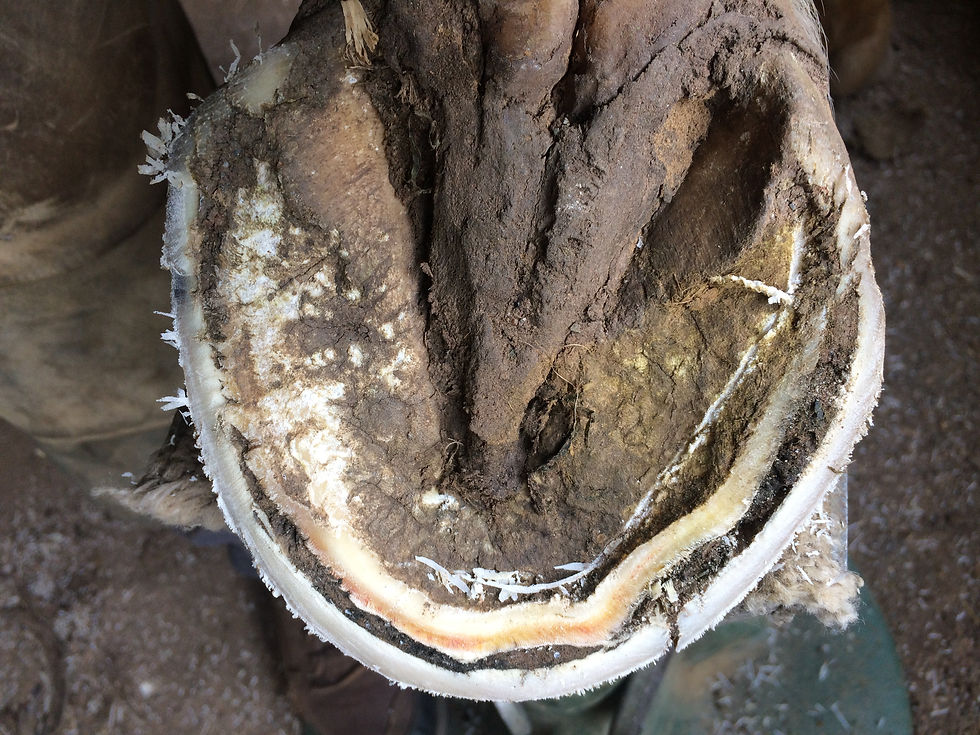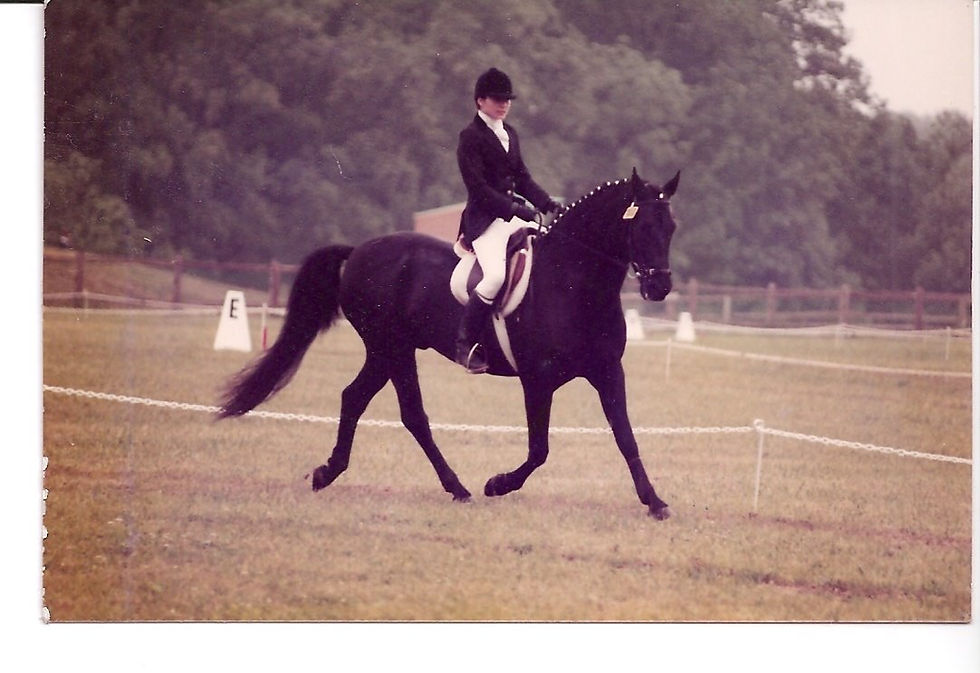Asphalt millings, a byproduct of road resurfacing, are used commonly in some areas on farms for driveways and parking areas. This photo shows what can happen if they are used in turnout areas for mud control. Millings were laid as a sub-base around the water trough of this mare’s paddock, and while it had been topped by a layer of stone dust, eventually the stone dust washed, wore and/or blew away, leaving mostly the millings as the top surface. In another paddock of the same farm, only millings were used. The horses turned out in these areas were trimmed or shod on a regular schedule; however, with normal weight bearing and stomping at flies, they all developed some separation between the walls and soles of all of their unshod hooves and millings embedded in the groove that formed between (outer dark line). Consequently, they became lame or at minimum foot tender. Their hooves also worn down faster and irregularly, and the separation and embedded material increased the risk of abscess formation. It takes months for hooves to grow enough to get rid of it. In the meantime, shoeing is an option that can provide them relief. Whether shoeing is an option for an owner or not, they should be moved to another area where there are no millings, preferably one with mainly grass to provide some cushioning (if your horse does not have metabolic problems with grass). In either case, the millings must be removed and replaced with something else, or the top surface must be regularly maintained and redressed so that the millings remain buried below it away from the horses. Millings can also leach chemicals into the surrounding environment. There are better options for mud control that do not cause these issues.






Comments